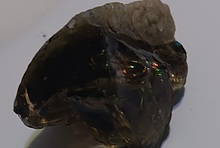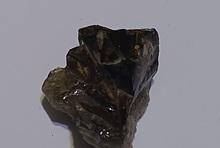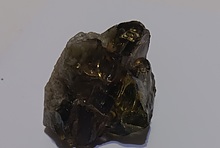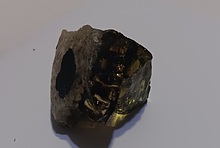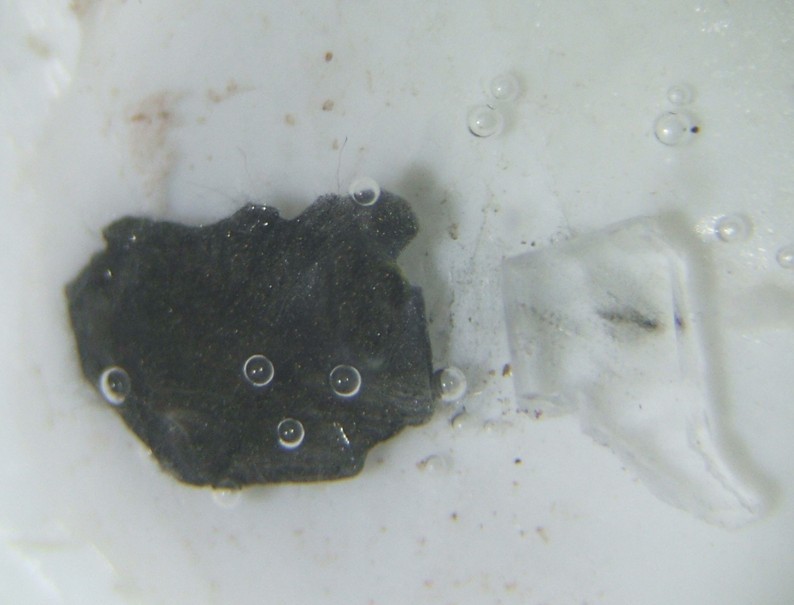Home PageAbout MindatThe Mindat ManualHistory of MindatCopyright StatusWho We AreContact UsAdvertise on Mindat
Donate to MindatCorporate SponsorshipSponsor a PageSponsored PagesMindat AdvertisersAdvertise on Mindat
Learning CenterWhat is a mineral?The most common minerals on earthInformation for EducatorsMindat ArticlesThe ElementsThe Rock H. Currier Digital LibraryGeologic Time
Minerals by PropertiesMinerals by ChemistryAdvanced Locality SearchRandom MineralRandom LocalitySearch by minIDLocalities Near MeSearch ArticlesSearch GlossaryMore Search Options
The Mindat ManualAdd a New PhotoRate PhotosLocality Edit ReportCoordinate Completion ReportAdd Glossary Item
Mining CompaniesStatisticsUsersMineral MuseumsClubs & OrganizationsMineral Shows & EventsThe Mindat DirectoryDevice SettingsThe Mineral Quiz
Photo SearchPhoto GalleriesSearch by ColorNew Photos TodayNew Photos YesterdayMembers' Photo GalleriesPast Photo of the Day GalleryPhotography
╳Discussions
💬 Home🔎 Search📅 LatestGroups
EducationOpen discussion area.Fakes & FraudsOpen discussion area.Field CollectingOpen discussion area.FossilsOpen discussion area.Gems and GemologyOpen discussion area.GeneralOpen discussion area.How to ContributeOpen discussion area.Identity HelpOpen discussion area.Improving Mindat.orgOpen discussion area.LocalitiesOpen discussion area.Lost and Stolen SpecimensOpen discussion area.MarketplaceOpen discussion area.MeteoritesOpen discussion area.Mindat ProductsOpen discussion area.Mineral ExchangesOpen discussion area.Mineral PhotographyOpen discussion area.Mineral ShowsOpen discussion area.Mineralogical ClassificationOpen discussion area.Mineralogy CourseOpen discussion area.MineralsOpen discussion area.Minerals and MuseumsOpen discussion area.PhotosOpen discussion area.Techniques for CollectorsOpen discussion area.The Rock H. Currier Digital LibraryOpen discussion area.UV MineralsOpen discussion area.Recent Images in Discussions
Techniques for CollectorsCalcite-aragonite test
18th Apr 2010 22:55 UTCReiner Mielke Expert
Feigl's solution is a mixture of silver and manganous sulphate ( 1g/12g) dissolved in 100ml of distilled water. There is a procedure of boiling, filtering and neutralization that is recommended for staining of polished sections but these are not necessary for this type of test, simply dissolve and use.
The photo shows a sample of aragonite ( on the left) and calcite ( on the right) after 30minutes in the solution.

20th Apr 2010 01:09 UTCJohn Duck

20th Apr 2010 06:13 UTCDonald Vaughn
20th Apr 2010 15:43 UTCJolyon Ralph Founder
Jolyon
20th Apr 2010 16:08 UTCReiner Mielke Expert
20th Apr 2010 16:29 UTCJolyon Ralph Founder
From what I can see it's pretty conclusively not true.
I have done a quick search, can't find any reputable source claiming that powdered aragonite turns to calcite, and plenty of scientific papers across many disciplines talking about powdered aragonite.
Is there any genuine research published that suggests this transformation happens? If not let's just consign it to myths and legends.
Jolyon
20th Apr 2010 17:03 UTCUwe Kolitsch Manager
Several sulphides (of Cu but also other elements I think) undergo phase transformation during grinding.
Prolonged grinding turns everything amorphous by the way, independent of hardness, toughness etc.
A lot of nano-scale amorphous powders are created this way (check scientific literature).
20th Apr 2010 17:09 UTCRoger Lang Manager
http://www3.interscience.wiley.com/journal/109776413/abstract?CRETRY=1&SRETRY=0
unfortunately for most of you in german, but there is mentioning of mechanically induced CaCO3 phase transition. There is a caveat that there have been inconclusive reports on this, mentioned obviously in the cited literature No 11-16 .. one is American Mineralogist, JAMIESON, GOLDSMITH, Amer. Mineralogist 45, 818 (1960), another one J.H. BURNS, BREDIG, J. chem. Physics 26, 1281 (1956). The other references are german. Maybe someone who has access can check those so there may be more clarity on this,
cheers
Roger
20th Apr 2010 17:21 UTCRoger Lang Manager
http://www.sciencedirect.com/science?_ob=ArticleURL&_udi=B6WHR-4CV80KF-HG&_user=10&_coverDate=05%2F31%2F1976&_rdoc=1&_fmt=high&_orig=search&_sort=d&_docanchor=&view=c&_searchStrId=1302809920&_rerunOrigin=google&_acct=C000050221&_version=1&_urlVersion=0&_userid=10&md5=4512d1b69b14aa73be0748c35ca0f5aa
http://www.sciencedirect.com/science?_ob=ArticleURL&_udi=B6V61-470F0RV-Y&_user=10&_coverDate=03%2F31%2F1984&_rdoc=1&_fmt=high&_orig=search&_sort=d&_docanchor=&view=c&_searchStrId=1302830198&_rerunOrigin=google&_acct=C000050221&_version=1&_urlVersion=0&_userid=10&md5=b767a4d110b28a6ebc2a7216a570d62a
cheers
Roger
20th Apr 2010 18:32 UTCUwe Kolitsch Manager
The grinding of small quantities of either calcite, aragonite, or vaterite in a stainless steel ball mill produces phase transformations. In each instance the end product is an equilibrium mixture of calcite and aragonite. Before the phase transformation calcite to aragonite can take place, a critical amount of lattice distortion, about 1.5%, must be developed. The calcite produced from transforming aragonite appears with and maintains this same distorted lattice. Vaterite is very unstable in the mill and transforms rapidly, first to calcite and then to a calcite-aragonite mixture. Each crystalline form of calcium carbonate is deformed plastically, and in a flowing together and apart of the grains a grinding equilibrium is established with an equivalent particle size of about 860 nm. The precipitated calcite suffered a marked reduction in specific surface area of from 20 to 3 m2/g. This type of grinding equilibrium has a markedly different character from the type proposed for laminar solids such as graphite.
A theoretical approach to the calcite-aragonite transformation is presented for the case of a dislocation glide mechanism obeying first-order kinetics. The kinetic parameters are determined from recent experimental data from the literature; the sensitivity of the model to these and other parameters like the grain size and the deviatoric stresses are discussed.
The model results in the definition of what could be the actual transformation domains of the CaCO3 polymorphs in the (P,T) plane. These domains are different from the classical ones, i.e. different from the stability fields defined with respect to Clapeyron's curve; they can evolve in the (P,T) plane when a deviatoric stress is applied to the system. In this case, we can define a domain in which the two senses of the calcite-aragonite transition are activated simultaneously. The application of the model to laboratory experiments needs the integration of the kinetic differential equation (K varying withP andT). Using this method, we demonstrate the role of (P,T,t) path on reaction rate and the role of experimental uncertainties on the reaction parametersK andn.
Finally, we discuss the problem of the synthesis of polymorphs out of their stability field and of their formation by grinding; these problems, difficult to tackle in terms of diffusion, can be approached with the proposed dislocation transformation kinetic model.

20th Apr 2010 19:36 UTCJohn Duck
Finally, I would like to point out that without simple tests such as the one suggested by Reiner or Meigen's Test, a collector's ability to identify aragonite from calcite is limited to crystal form and cleavage which are often not helpful.
20th Apr 2010 21:31 UTCRoger Lang Manager
thx .. i was able to read the abstracts of course but have no login to read the full articles. The first reference i posted has some interesting conclusions which seem to have been confirmed in later work. If Aragonite is grinded under high pressure the high local temperature will lead to partial phase transition to calcite (as it is the "high temperature stable phase" ) but limited to a 7:3 ratio under the described conditions. Opposite way, calcite will turn into aragonite too because of strain ("high pressure stable phase" ). So Jolyon´s post to put this under myths and legends is certainly rebutted. Still remaining the question what actually happens to aragonite when grinded .... surely depends on HOW the mechanical prep is carried out.
In the other post Reiner mentioned above i reported that we had this issue when grinding (visually identified, automatic mills) aragonite and got calcite peaks too. The reference above would explain that. As you wrote above, sulfides show phase transition due to grinding .. i mentioned the wurtzite-sphalerite problem we ran into. Aragonite grinded manually in an agate mortar - no problem. Another thing is the transition of Aragonite to Calcite in natural environments especially if acqueous solutions are involved. There is a lot of scientific literature dealing with this especially in biogenic carbonate environment (shells, clams) which indicates that aragonite finally being replaced by calcite. Same may occur in hydrothermal environments when a later (hydro)thermal pulse affects early aragonite. So this may explain Reiners and Maggies mexican aragonite issue (or not (:P);-) ).
Reiners described method works well.. we used Feigls solution too. The other method with cobalt salt is better on the distinguishing of dolomite and calcite ... we learned this 20 years ago during a field trip exercise AFAIR.. but no guarantee that i remember correctly , hehe.
(EDIT: may have been wrong remembering .. could have been alizarine red ... argh, i forgot too much stuff)
interesting thread!
And John, full ack! ... but Jolyon questioned the fact of phase transition due to mechanical stress/strain
cheers
Roger
21st Apr 2010 01:16 UTCReiner Mielke Expert

23rd Apr 2010 01:51 UTCJohn Duck
Qualitative test to distinguish calcite and aragonite from dolomite:
Etch a clean rock surface with 10% hydrochloric acid. Place a few drops of Alizarin Red-S (0.1 gram dye in 50 milliliters 1.5% hydrochloric acid) on the area. Calcite or aragonite will stain a pink or red within 2-3 minutes. Dolomite will remain unstained.
23rd Apr 2010 03:28 UTCRock Currier Expert
23rd Apr 2010 05:51 UTCVolker Betz 🌟 Expert
concerning Calcite/Dolomite : Plain vinegar (5 % Acetic acid) does also the job.
A small grain of calcite will develop significant amounts of CO2 while Dolomite is almost not dissolved.
I do the test under a microscope and use a small particle of pure Calcite (Iceland-spar) for reference. A very small grain <0.5 mm is sufficient.
Volker

23rd Apr 2010 06:16 UTCDavid H. Garske
Dave

24th Apr 2010 09:47 UTCDonald Vaughn

24th Apr 2010 15:27 UTCHenry Barwood

2nd May 2010 00:53 UTCJohn Attard Expert
To elaborate a little further for those interested: A few degrees below that, aragonite has two peaks and they are well resolved from the calcite peak. So by scanning from 25 to 31 degrees one can find aragonite and calcite. Slow scanning and standardization against carefully weighed proportions of pure aragonite and pure calcite enables a calibration to be set up to measure the % calcite in aragonite, a project I did a couple of years ago for a customer. One can measure down to at least 0.2% calcite in a calcite / aragonite mixture. I did not do this calibration this time because it was unnecessary for the present purpose. However I picked up on the experience of two years ago and decided to scan slowly the sample that has been ground for 4x as usual from 25 to 31 degrees. The image shows the XRD scan and reveals no peak at 29.5 where calcite would have shown up. This does not contradict what Uwe mentioned. If I had ground it for a hundred times as long or in a ballmill or at high temperature or pressure cooked in water in a hydrothermal bomb in an oven at 180 C the results could have been different. Here I set to find out whether or not we can be confident that regular powdering of aragonite for XRD testing has the danger of producing false results by generation calcite during the process. I conclude that we can be confident that no calcite is produced by the grinding process under the conditions used.
John Attard
San Diego, California.
2nd May 2010 01:37 UTCRock Currier Expert
That is useful practical information. You should write that up as an article and also include some of the information of others and give the back ground as to why you ran the tests you did. You might also repeat the experiment on a known specimen of aragonite from a well know aragonite locality, like the aragonites from Spain or Morocco. I would be glad to donate a few specimens from Morocco if you don't have one handy. I think it would be us full to post a quick note as to the results of your experiment on the Aragonite locality page with a link to your article? As you know by this time I am not bashful about trying to hornswaggle others into doing work for free.

2nd May 2010 02:19 UTCJohn Duck
Thanks for taking the time to investigate and quantify the effects of hand grinding on the aragonite-calcite phase transition. I think you have laid this concern to rest and provided all of us here with some very useful information.

2nd May 2010 04:30 UTCHenry Barwood
Good test! We used to use large puck grinders at NARCO and those things would grind refractories to an ultrafine powder in under a minute. The pucks weighed about 5 pounds and were Tungsten Carbide. We were mostly interested in pressing XRF pellets, so amorphitization was never a problem.

5th May 2010 05:19 UTCJohn Attard Expert
Rock by this time you have donated thousands of hours of useful work to mindat so you need not be bashful at all. So the least thing I can do is to test the two aragonites you suggest: one from Morocco and one from Spain. I did so and both are aragonite; no calcite was detected. (detection limit bolow 0.1%). The scans look like the attachment I put recently on this thread.... no peak at 29.5.
John Attard
San Diego, California.

15th Aug 2010 15:13 UTCKeli
i am new in this forum but it is very nice and rich in different sources of information. Really Great forum! But i did not understand something and i would like to ask. I am not too familiar with XRPD (X-Ray powder diffraction) and i do not understand why and how it works the recognition between aragonite, calcite and vaterite? I know that every polymorph has a different 2theta where it appears, but why and how exactly this works?
Thanks in advance if somebody decide to answer me?
Regards,
Keli
15th Aug 2010 16:24 UTCPeter Nancarrow 🌟 Expert
When you put a specimen of a mineral into an XRD powder analyser, the pattern of peaks on the 'spectrum' (appearing at the characteristic diffraction angles, the 2-theta values you referred to) is a function of the relationship between the wavelength of the X-rays being used and the spacings between the lattice planes in the crystalline material being analysed.
So, the fundamental thing to understand about X-ray diffraction is that it is a method which gives data derived from the physical dimensions of the crystal lattice planes, rather than being directly related to the chemical elements in the material being analysed. The different arrangement of ions in each different crystal structure gives rise to a characteristic pattern of peaks representative of those structures. Even if the same set of elements is present in exactly the same weight proportions in each phase, so that they have empirically the same chemical compostion (i.e. they are polymorphs of a particular chemical compound - e.g. calcite/aragonite, rutile/antase, kyanite/andalusite, etc), each structure will give a different XRD pattern.
It's a complex subject, but if you want to read a bit more explanation of what I have very briefly described above, have a look at this link: The basics of X-ray Diffraction.
Hope this helps; glad to add more if you have any other questions.
Pete N.

22nd Aug 2010 15:52 UTCKeli
thanks a lot for the explanations. They were really nice and clear. I am very glad that i know much more now then before. Thanks once again.
Regards,
Keli

22nd Aug 2010 22:15 UTCWilliam G. Lyon
The amorphization of quartz by grinding has been studied in many published papers, and its progress can be easily followed by X-ray, FTIR, and other means. Many surface studies of the zero point of charge for "quartz" based on ground material are probably for amorphous silica.

4th Apr 2012 09:11 UTCRalf boustani
thank you for your help
Ralf
6th Apr 2012 10:34 UTCFrank K. Mazdab 🌟 Manager

5th Mar 2013 17:33 UTCFred Taylor
5th Mar 2013 18:38 UTCOwen Lewis
- The nacre that gives mother-of-pearl and pearls their lustre is a layer of aragonitic platelets, laid down over a solid calcitic base.
- Gem coral (Corallium Rubrum) is disordered magnesian calcite with an Mg++ content of ~ 10%, with minor calcium sulphate, phosphates, silica and iron oxide also present.
What we call 'coral' is, of course the excreted exoskeletal material produced by colonies of several species and varieties of marine animal. It's also clear that the exoskeletal material varies in composition according to species. E.g. the main part of black coral (Antipathes grandis and Antipathes dichotoma) is not any carbonate but an organic compound, conchiolin (a protein). Probably therefore, before setting down the chemical composition of these excretions, one may need to be sure too of the animal type that excreted it? It seems that there is no one general case.

6th Mar 2013 17:42 UTCHenry Barwood
Was the coral wet or dry ground. I have found that the big WC "puck" type grinders will degrade even clay minerals when run dry. I suspect it is the heat build up and not the actual grinding.

13th Mar 2013 19:14 UTCWilliam G. Lyon

14th Mar 2013 20:07 UTCcascaillou
I have a good book in french language about qualitative chemical analysis of minerals.
Calcite versus aragonite:
in a pyrex test tube, boil the powder of the mineral for 20 minutes in a saturated cobalt nitrate solution, allow to settle, rince the powder with distilled water, and allow to completely dry on filter paper.
->purple powder = aragonite
->blue powder = calcite (more time required for that coloration to appear)
The book also features three other reciepes (using other reagents) which allow to separate:
-calcite vs dolomite
-calcite vs dolomite vs siderite vs ankerite
-calcite vs aragonite vs magnesite vs ankerite vs dolomite vs siderite

23rd Apr 2013 12:26 UTCAnonymous User
jp

23rd Apr 2013 15:44 UTCcascaillou
and I'm pretty sure I can find much cheaper sources using these two search engines:
http://www.buyersguidechem.com/Asimil.php
http://www.chemexper.com/




Mindat.org is an outreach project of the Hudson Institute of Mineralogy, a 501(c)(3) not-for-profit organization.
Copyright © mindat.org and the Hudson Institute of Mineralogy 1993-2024, except where stated. Most political location boundaries are © OpenStreetMap contributors. Mindat.org relies on the contributions of thousands of members and supporters. Founded in 2000 by Jolyon Ralph.
Privacy Policy - Terms & Conditions - Contact Us / DMCA issues - Report a bug/vulnerability Current server date and time: April 19, 2024 14:17:26
Copyright © mindat.org and the Hudson Institute of Mineralogy 1993-2024, except where stated. Most political location boundaries are © OpenStreetMap contributors. Mindat.org relies on the contributions of thousands of members and supporters. Founded in 2000 by Jolyon Ralph.
Privacy Policy - Terms & Conditions - Contact Us / DMCA issues - Report a bug/vulnerability Current server date and time: April 19, 2024 14:17:26





